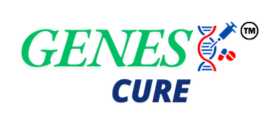Antifungal medications: Used for fungal infections associated with genetic diseases.

Brief information about it:
Antifungal medications are used to treat fungal infections, which can be caused by various types of fungi. While fungal infections are generally uncommon in people with healthy immune systems, they can be more common in individuals with genetic diseases or weakened immune systems.
Uses:
· Fungal infections: Antifungal medications are used to treat a variety of fungal infections, including:
- Thrush (oral candidiasis)
- Vaginal yeast infections
- Skin infections (e.g., athlete’s foot, ringworm)
- Systemic fungal infections (e.g., histoplasmosis, blastomycosis)
· Genetic diseases: Some genetic diseases can increase the risk of fungal infections. Antifungal medications may be used to prevent or treat fungal infections in individuals with these conditions.
Mechanism of action:
Antifungal medications work by interfering with the growth and reproduction of fungal cells. There are several different classes of antifungal medications, each with its own mechanism of action. Some antifungals target the cell wall of fungal cells, while others interfere with the synthesis of fungal proteins or nucleic acids.
Elimination half life:
The elimination half-life of antifungal medications can vary depending on the specific medication and individual factors. It can range from a few hours to several days
Route of Administration:
Antifungal medications can be administered in various ways, including:
- Oral: Antifungal medications can be taken orally as pills or tablets.
- Topical: Antifungal creams, ointments, or powders can be applied to the skin or mucous membranes.
- Intravenous: In severe cases of fungal infections, antifungal medications may be administered intravenously.
Side effects:
- Digestive issues: Antifungal medications can sometimes cause digestive problems, such as nausea, vomiting, or diarrhea.
- Liver problems: Some antifungal medications can affect liver function.
- Allergic reactions: Allergic reactions to antifungal medications are possible.
Dose:
The recommended dose of antifungal medications varies depending on the type of fungal infection, the severity of the infection, and individual factors. Your doctor will determine the appropriate dosage and duration of treatment.
Precautions:
· Consult a doctor: Before taking antifungal medications, consult with a healthcare professional to ensure they are safe for you and to discuss potential risks and benefits.
· Pregnancy and breastfeeding: If you are pregnant or breastfeeding, consult with your doctor before taking antifungal medications.
· Medication interactions: Antifungal medications may interact with other medications. Inform your doctor about all the medications you are taking.





